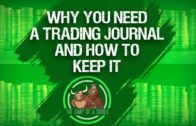Trading Toolbox – Why you Need a Trading Diary
Do you want to know more about the perfect forex trading toolbox? Watch our latest video to learn how to keep a trading diary and get profitable trading results.
Why you Need a Trading Diary and how to keep it
One of the biggest mistakes that traders will make is not keeping track of their trades. This is because it takes a bit of extra effort that doesn’t show immediate profits. However, those who have been trading for a while understand the benefits of tracking your trades. This gives you an idea of what has been working and what has not been working for you, as well as whether you have been over trading.
The easiest way to keep a trading diary is to use Microsoft Excel, right along with Microsoft Word. With Microsoft Word, you simply type what you have been thinking about when you place the trade, either technical indicators or perhaps some type of news announcement. With this, you can write something to the effect of “I bought the British pound against the US dollar as the British GDP came out at 2.1%, as opposed to the expected 2.0% for Q3.” You can then write the parameters of the trade, such as when you got in, the trade size, the entry price, stop losses, and other pertinent information.
When looking at results, the easiest way to do so is to use Microsoft Excel. Obviously, this can get as complicated as you needed to, but at the very least you are going to need to keep track of the date, the time, the pair, whether you buy or sell that pair, the entry price, the stock price, the limit price, and the trade size. Obviously, you want to keep track of the results. This can give you an idea of how your performance has been coming along, and sometimes can even be used to make charts and histograms to give you an idea of what pairs you do better in than others. You’d be surprised at how often we don’t understand that we may be better at a currency pair than another.
Professional traders will keep track of their thought process as well as their results and look back at previous moves to enhance our performance over the longer term.



 Difference Between Hammer and Hanging Man 2023 [ Must Watch for Trader ]
Difference Between Hammer and Hanging Man 2023 [ Must Watch for Trader ]